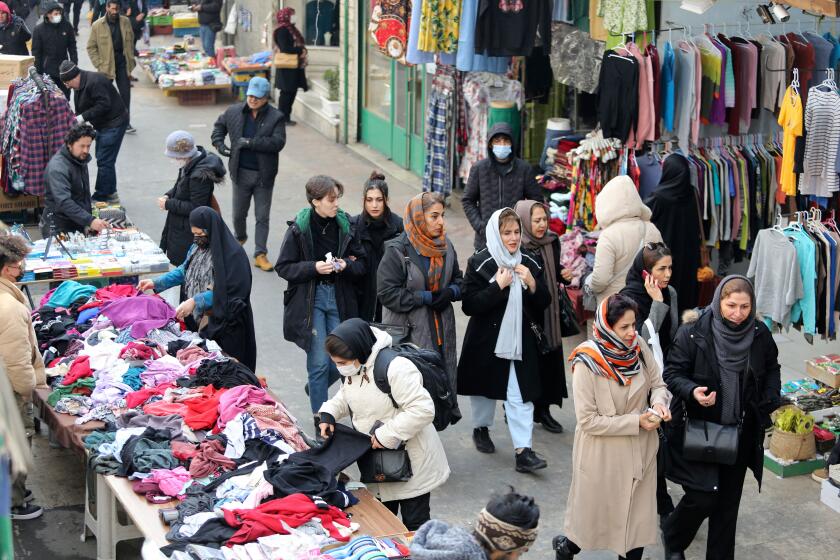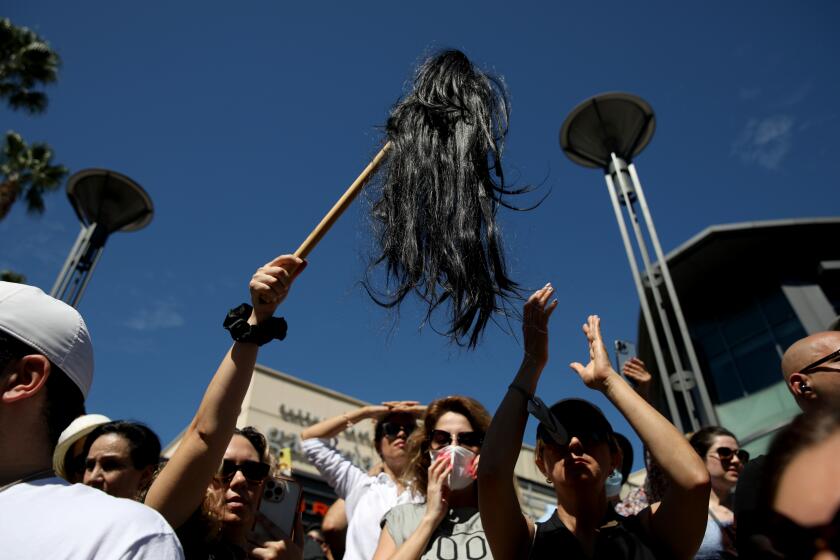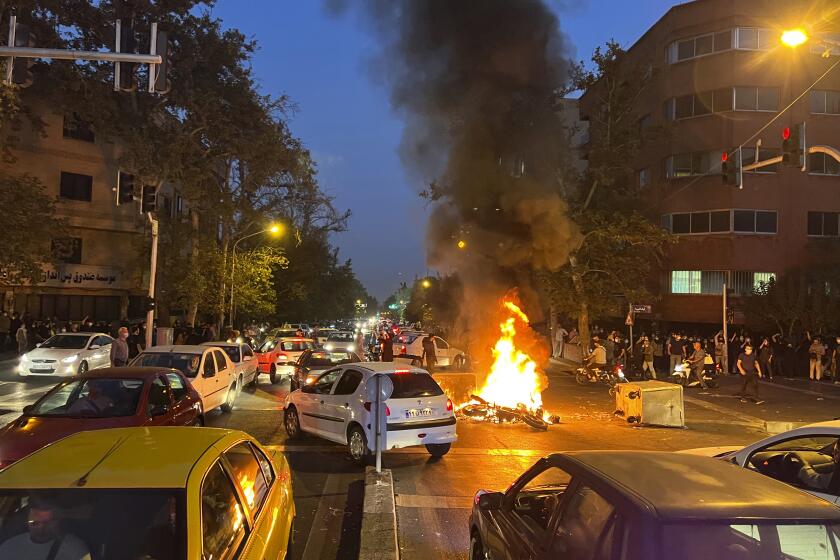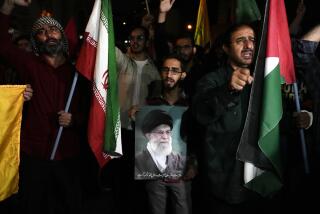70 years later, Iran is still haunted by the CIA-led coup that toppled its prime minister
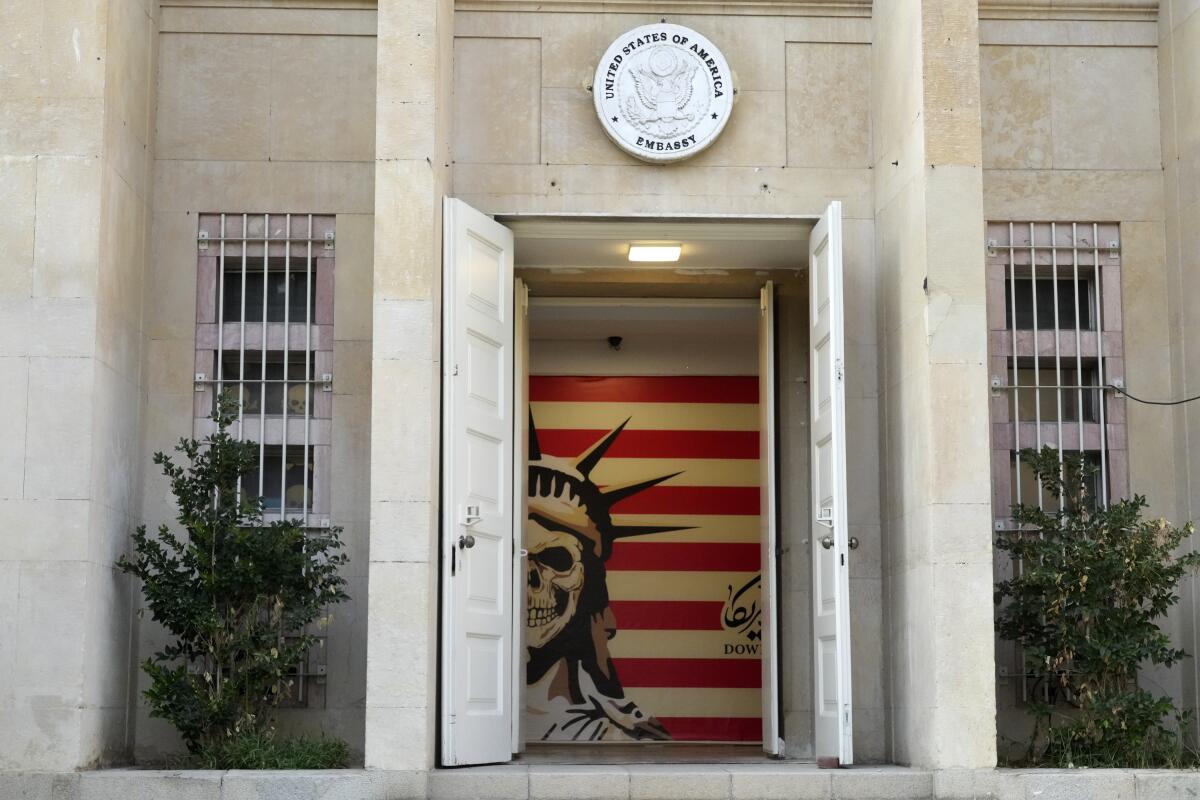
- Share via
TEHRAN — Seventy years after a CIA-orchestrated coup toppled Iran’s prime minister, its legacy remains both contentious and complicated for the Islamic Republic as tensions stay high with the United States.
While highlighted as a symbol of Western imperialism by Iran’s theocracy, the coup unseating Prime Minister Mohammad Mossadegh — over U.S. fears about a possible tilt toward the Soviet Union and the loss of Iranian crude oil — appeared to be backed at the time by the country’s leading Shiite clergy.
But nowadays, hard-line Iranian state television airs repeated segments describing the coup as showing how America can’t be trusted, while authorities bar the public from visiting Mossadegh’s grave in a village outside of Tehran.
Such conflicts are common in Iran, where “Death to America” can still be heard at Friday prayers in Tehran, while many on its streets say they’d welcome a better relationship with the U.S. But as memories of the coup fade along with those alive during it, controlling which allegory Iranians see in it has grown more important for the country’s government and its people.
“Maybe the U.S. did this out of fear of the emerging power of the Soviet Union, but it was like wishing for an earthquake to get rid of a bad neighbor,” said Rana, a 24-year-old painter who, like some others, gave only her first name for fear of reprisals. For Iranians, “the rancor has never melted.”
The August 1953 coup stemmed from U.S. fears over the Soviet Union increasingly wanting a piece of Iran as Communists agitated within the country. The ground had been laid partially by the British, who wanted to wrest back access to the Iranian oil industry, which had been nationalized by Mossadegh.
The coup toppled Mossadegh and cemented Shah Mohammad Reza Pahlavi’s power. It also lighted the fuse for the 1979 Islamic Revolution, when the fatally ill shah fled Iran and Ayatollah Ruhollah Khomeini ushered in the theocracy that still governs the country.
Today, several who spoke to the Associated Press about the 1953 coup and possible relations with the U.S. put it in the context of Iran’s ailing economy, which has been battered by sanctions after the collapse of its 2015 nuclear deal with world powers.
Iranians are finding it harder than ever to afford even basic goods as political unrest roils the country and the government cracks down harshly.
Lower tensions with the U.S. “will bring more money for my business,” said Hossein, 47, who runs a canteen for cabdrivers in Tehran. “Now taxi drivers spend less compared to the past years and it is because of these bad relations, sanctions.”
“I know about this bitter history, but it should come to end sometime soon,” added Majid Shamsi, who works as a parcel carrier in central Tehran. “Young people in Iran seek a better life, and it cannot come as a result of enmity with” the U.S.
Even during increasingly common protests by teachers, farmers and others in Iran, some of the regular chants include: “Our enemy is here; they lied to us [that the enemy] is the U.S.”
“Iran today should accept a deal with the U.S. like what it did to release dual nationals,” added teacher Reza Seifi, 26. “I need it for my better future, for a better future for all.”
But like with the exchanges with the U.S., there are limits to how far Iran’s government will go in remembering Mossadegh.
Last weekend, state television’s English-language Press TV aired a segment with a journalist standing on Mossadegh Street in northern Tehran. But over the last 20 years, police have restricted access to those wanting to visit his grave in his ancestral home in Ahmadabad, some 55 miles northwest of Tehran. In the village, tall walls and a locked gate keep out those wanting to pay their respects, while officers question those who look like they don’t live there.
Some found other ways to mark the 70th anniversary of the coup.
“I could not go to his grave to pay tribute, but I have visited the graves of his supporters and allies like Hossein Fatemi,” said Ebrahim Nazeri, 32, as he, his wife and two children stood at the graveside of Fatemi, Mossadegh’s foreign minister who was executed after the coup. “He was a hero like Mossadegh.”
Another visitor to Fatemi’s grave, teacher Ehsan Rahmani simply said that “the U.S. planted hatred in the hearts of Iranians” through the coup.
For Iranian Supreme Leader Ayatollah Ali Khamenei, the 1953 coup represents what he views as the continued threat from the U.S., whether that be from economic sanctions or the nationwide protests that have gripped Iran after the death last year of Mahsa Amini in police custody.
From Tehran to Los Angeles, the act of cutting hair has become a form of resistance.
Online organizing has been a boon for anti-government protesters in Iran. But that leaves them vulnerable to government efforts to curtail internet access.
On Thursday, Khamenei told members of Iran’s paramilitary Islamic Revolutionary Guard that Washington had planned to overthrow the country’s theocracy through a coup like in 1953 through its military. Iran carried out mass executions and purges of its regular military after the revolution.
“The enemies tried to undermine and paralyze the revolution by creating continuous crises,” Khamenei said, according to a transcript on his official website. “They then plotted to put an end to the revolution with a measure similar to the coup that took place on August 19, [1953]. However, the [guard] thwarted it. This is the reason why the enemies have so much hatred and animosity towards the” guard.
The Revolutionary Guard’s chief, Gen. Hossein Salami, vowed to “expel“ American forces from the region. His remarks came amid a major American military buildup in the Persian Gulf, with the possibility of U.S. troops boarding and guarding commercial ships in the Strait of Hormuz, through which 20% of all oil shipments pass.
However, some remain hopeful Iran could reach a detente with the U.S., as it recently did with Saudi Arabia.
“I dream that the supreme leader allows talks and better relations with the U.S.,” said Mohsen, 29, a furniture shop salesman in northern Tehran. “He allowed the restoration of ties with Saudi Arabia. He can allow the same for the U.S.”
More to Read
Sign up for Essential California
The most important California stories and recommendations in your inbox every morning.
You may occasionally receive promotional content from the Los Angeles Times.
